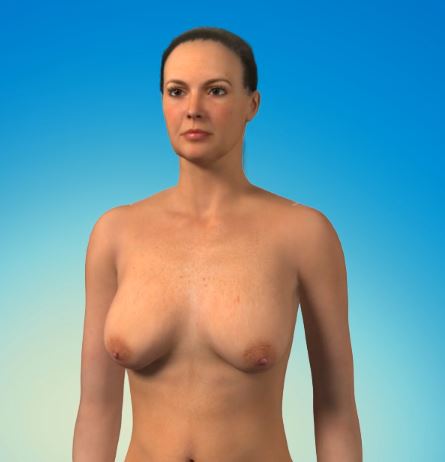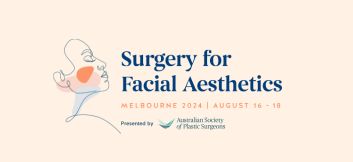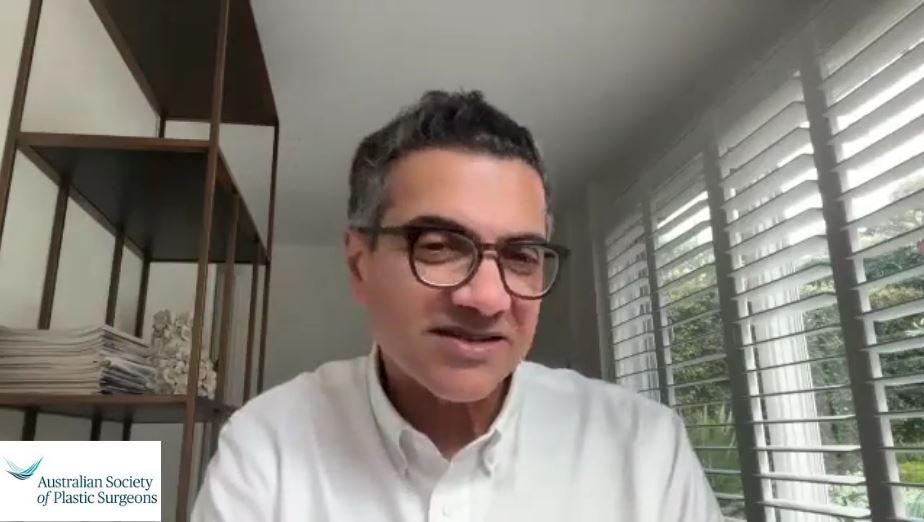Procedures
Breast Lift
- About Your Specialist Plastic Surgeon
- Cosmetic
- Non-surgical Procedures
- Plastic Surgery Glossary
- Questions for Your Surgeon
- Reconstructive
- Surgical Procedures
- Abdominoplasty (Cosmetic)
- Abdominoplasty (muscle repair postpartum)
- Arm Lift
- Body Contouring
- Body Lift
- Breast Asymmetry Correction
- Breast Augmentation (Implants)
- Breast Implants with Lift
- Breast Lift
- Breast Reconstruction
- Breast Reduction
- Brow Lift
- Burns and Scarring
- Buttocks Lift
- Chin Surgery
- Cleft Lip & Palate
- Ear Surgery
- Eyelid Reduction Surgery
- Facelift Surgery
- Facial Implants
- Fat injection
- Gender Affirming Surgeries
- Gynaecomastia (Male Breast Reduction)
- Hair Replacement Surgery
- Hand Surgery
- Labiaplasty
- Liposuction
- Nipple Enhancement for Inverted Nipples
- Nose Surgery
- Scar Revision
- Skin Cancer
- Thigh Lift
- Tissue Expansion
Breast Lift

Breast lift surgery, also known as mastopexy, is a procedure that raises and firms the breasts. The procedure involves removing excess skin to tighten the surrounding tissue and reshape and support the new breast contour. Additionally, the internal breast tissue is typically reshaped during the process.
Any surgical or invasive procedure carries risks. Before proceeding, you should seek a second opinion from an appropriately qualified health practitioner.
Breast lift surgery is designed to reshape and tighten the breast contour by removing excess skin. This gives the breasts a more firm and raised appearance. A breast lift can also reduce the size of the areola, which can become enlarged over time.
Breast lift surgery is a highly individualised procedure and may not be suitable for everyone. Always talk to your Specialist Plastic Surgeon before making a decision.
The Specialist Plastic Surgeon will evaluate your condition, overall health, and determine the most suitable treatment plan for you.
Before you decide on breast lift surgery, there are some important issues to keep in mind:
- Breast lift surgery does not significantly change the size of your breasts or round out the upper part of your breast. If you want your breasts to look fuller or smaller, you might want to consider either breast augmentation or breast reduction surgery
- Surgeons generally recommend waiting until breast development, child birth and breastfeeding have stopped before undertaking breast lift surgery
- Although breasts of any size can be lifted, the results may not be as long-lasting in women with heavier breasts
A breast lift may be a good option for you if:
- You are physically healthy
- You have realistic expectations
- Your breasts are fully developed
- Your breasts are sagging and have lost their shape and firmness
- Your breasts have a flatter, elongated shape or are pendulous
- When unsupported, your nipples fall below the breast crease
- Your nipples and areolas point downward
- You have stretched skin and enlarged areolas
- One breast is lower than the other
Remember that the shape and size of your breasts before surgery will influence the surgical procedure and the outcome.
Yes, breast lift surgery requires either general or local anaesthesia. Modern anaesthesia is safe and effective, but does have some risks. Ask your Specialist Plastic Surgeon and anaesthetist for more information.
Your surgeon and/or anaesthetist will ask you about all the medications you are taking or have taken, and any allergies you may have. Make sure you have an up to date list before the surgery.
Modern surgery is generally safe but does have the potential for risks and complications to occur.
Some possible complications and risks associated with breast lift surgery may include:
- Surgical risks such as bleeding or infection
- Fluid accumulation around the operation site(s)
- Visible and prominent scars including keloid and hypertrophic scars. These are raised, red and thickened scars that may form over the healed incisions. They may be itchy, annoying and unsightly but are not a threat to health
- Allergic reaction to suture materials, tape adhesive or other medical materials and lotions
- Skin discoloration, permanent pigmentation changes, swelling and bruising
- Fatty tissue deep in the skin could die (fat necrosis) leaving hard lumps
- Changes in breast and nipple sensation
- Temporary or permanent areas of numbness
- Asymmetry (unevenness) of the breasts
- Excessive firmness of the breast
- Potential partial or total loss of nipple and areola
- Need for further surgery to treat complications
- Risks of anaesthesia including allergic reaction or potentially fatal cardiovascular complications such as heart attack
- A blood clot in the deep veins of the legs (deep vein thrombosis), which can move to the lungs (pulmonary embolus) or to the brain and may be life threatening.
The duration of your hospital stay for breast lift surgery will depend on your general health and the extent of the procedure. In some cases, it can be performed as a day case, while in others, a short hospital stay may be required. Your Specialist Plastic Surgeon will advise on the best option for you.
Before undergoing surgery, it is important that you:
- Be as fit as possible to help the recovery process
- Reach your optimal weight
- Check with your surgeon about your medications as some may need to be stopped
- Stop smoking
Your Specialist Plastic Surgeon will request a comprehensive medical history from you, including information about any past or current health conditions, medications you are currently or have previously taken, and any known allergies you may have. This information is crucial for ensuring your safety and determining the most appropriate course of action for your procedure.
You may be advised to stop taking certain medicines such as non-steroidal anti-inflammatory drugs (NSAIDs), aspirin, and medicines that contain aspirin. You may also be asked to stop taking naturopathic substances such as garlic, ginkgo, ginseng and St John’s Wort as they may affect clotting and anaesthesia. Always tell your surgeon EVERYTHING you are taking.
You may be given medicines to take before the surgery, such as antibiotics.
If you decide to have breast lift surgery, your surgeon will ask you to sign a consent form. Make sure you read the consent form carefully before signing. If you have any questions, ask your surgeon.
Unless your surgeon advises differently, you will be able to continue taking most medicines that you have been taking.
Your surgeon will advise you if any other tests are required, such as blood tests, X-ray examinations or an Electrocardiograph (ECG) to assess your heart.
Prepare a “recovery area” in your home. This may include pillows, ice packs, a thermometer and a telephone within easy reach. Make sure you arrange for a relative or friend to drive you to and from the hospital or clinic. Someone should also stay with you for at least 24 hours after you return home.
Your surgeon should give detailed preoperative instructions. Follow them carefully.
While you are healing, you may experience some pain, bruising, swelling and numbness around the operated site. This is normal. Your Specialist Plastic Surgeon will prescribe pain relief as needed. If you have any problems or concerns, be sure to tell your surgeon.
After surgery, you will wear an elastic dressing or surgical bra to provide support for your breast. A plastic tube may be inserted into each breast to drain excess fluid. Other dressings may be changed or removed at this time.
Depending on the extent of your procedure, you may need to take a few days off work to rest. Avoid heavy lifting, strenuous exercise, swimming and strenuous sports until advised by your surgeon.
Getting help
If you experience any of the following symptoms, notify your surgeon immediate:
- Temperature higher than 38°C or chills
- Nausea, vomiting, shortness of breath or diarrhea
- Heavy bleeding from the incisions
- Leakage of blood or fluid beyond the first day after surgery
- Worsening and/or spreading redness around the incision sites
- Increasing pain or tenderness in either breast
- Any other concerns or problems regarding your surgery, particularly if it appears to be worsening
Your surgeon will give you specific instructions on post-operative care. These instructions may include:
- How to care for your surgical site(s) following surgery
- Medications to apply or take orally to aid healing and reduce the risk of infection
- Specific concerns to look for at the surgical site(s) or in your general health
- When to follow-up with your surgeon
Be sure to ask your surgeon specific questions about what you can expect during your individual recovery period, such as:
- Where will I be taken after my surgery is complete?
- What medication will I be given or prescribed after surgery?
- Will I have dressings/bandages after surgery? If so, when will they be removed?
- Are stitches removed? When will they be removed?
- When can I resume normal activity and exercise?
- When do I return for follow-up care?
Scars are an inevitable part of any invasive surgery. Your Specialist Plastic Surgeon will endeavour to minimise scarring and to keep your scars as inconspicuous as possible by locating the incisions in easily hidden sites. That way, scars will be along natural skin lines and creases. Scars may fade with time and become barely noticeable. If you are prone to scarring, you should advise your surgeon.
In most circumstances, breast lift surgery does not need to be repeated. However, as with all surgical procedures, revisional surgery may be necessary to correct minor irregularities.
Cost is always a consideration in elective surgery. Prices for individual procedures can vary widely between Specialist Plastic Surgeons. Some factors that may influence the cost include the surgeon’s experience, the type of procedure used and the geographic location of the office.
Costs associated with the procedure may include:
- Surgeon’s fee
- Hospital or surgical facility costs
- Anaesthesia fees
- Prescriptions for medication
- Post-surgery garments
- Medical tests
Your surgeon should welcome any questions you may have regarding fees.
- Areola: Pigmented skin surrounding the nipple
- Breast augmentation: Also known as augmentation mamoaplasty, breast enlargement by surgery
- Breast reduction: Also known as reduction mammoplasty, reduction of breast size by surgery
- Excision: To remove the skin
- General anaesthesia: Drugs and/or gases used during an operation to relieve pain and alter consciousness
- Haematoma: Blood pooling beneath the skin
- Inframammary incision: An incision made in the fold under the breast
- Intravenous sedation: Sedatives administered by injection into a vein to help you relax
- Local anaesthesia: A drug injected directly to the site of an incision during an operation to relieve pain
- Mammogram: An x-ray image of the breast
- Mastopexy: Surgery to lift the breasts
- Sutures: Stitches used by surgeons to hold skin and tissue together
Visit the Plastic Surgery Glossary for more medical terms.
This website is intended to provide you with general information only. This information is not a substitute for advice from your Specialist Plastic Surgeon and does not contain all the known facts about this procedure or every possible side effect of surgery. It is important that you speak to your surgeon before deciding to undergo surgery. If you are not sure about the benefits, risks and limitations of treatment, or anything else relating to your procedure, ask your surgeon to explain. Patient information provided as part of this website is evidence-based and sourced from a range of reputable information providers including the American Society of Plastic Surgeons, Better Health Channel and Mi-tec medical publishing.
Featured Stories

Member Blog with Dr Ellis Choy: What is a Deep Plane Facelift?
Who is the ideal candidate for a deep plane facelift?…
Continue reading
